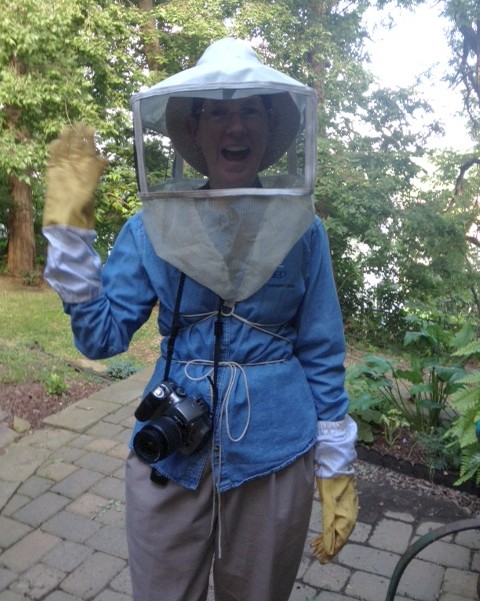
13 August 2013
Hello, Earthlings!
My friend Joan Guerin who has two beehives so last month I took the opportunity to learn about her honeybees. Joan loaned me a beekeeping veil and gloves. That’s me waving from inside the veil.
In just one visit I learned so much about bees that it’ll take several blog entries to tell you. Today I’ll talk about beekeeping but barely touch the surface.
First rule, if you’re allergic to bee stings this is not the job for you!
Gear: Honeybees only sting to protect their hive or if they get trapped in your clothing. Since beekeeping disturbs their hive, wear the gear. I cinched mine tight to prevent wayward bees from exploring under the edges. Joan is so familiar with her bees that she didn’t wear gloves and her hands were just fine … except that a lone bee walked up under her bell-bottom pant leg, panicked, and stung. Joan calmly removed the stinger and moved on. (Many old-timers don’t even bother with gear.) The honeybee that stings, dies of the effort because the stinger, which sticks in its victim, yanks off part of the bee’s body.
Smoke: Thousands of years ago people learned that bees are less likely to sting if you blow smoke at the hive. When bees smell smoke they think the forest is burning so they rush to the honeycombs and chow down in case they have to evacuate soon. Smoke also masks their alarm pheromones so if a lone bee stings you, the rest don’t smell the alarm and join in a stinging campaign.
Below, Joan’s smoker burns paper and wood chips. When closed it looks like a teapot with a bellows on the side.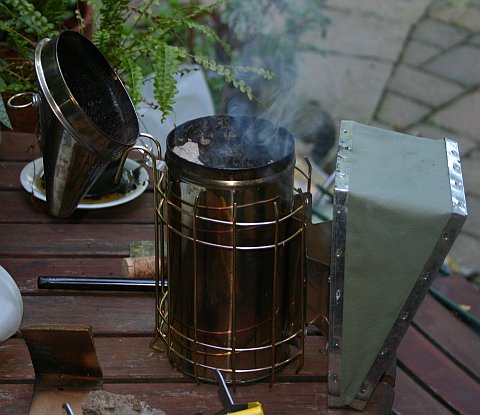
Joan started by blowing smoke at the entrance of the first hive. The entrance is a small space near the bottom, out of view of the camera.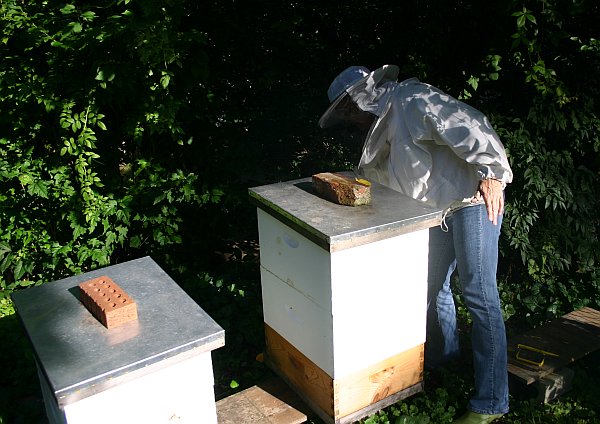
Man-made hives are sectional so the beekeeper can easily open them to check the bees, retrieve bee products and rearrange the sections if necessary. Rearranging becomes necessary because the queen bee moves upward in the hive as she lays eggs in chambers prepared by her workers. If the queen gets close to filling the available space the colony splits and half of them fly away with a new queen. (Not good for the beekeeper!)
To keep the colony intact, beekeepers move the queen’s section to the bottom and add another section for the bees to use. Or the beekeeper can split the hive into a second stack and even provide a new mail-order queen, though the bees can make a new queen on their own (of course).
The Hive Tool: Opening the hive is not a simple matter. The bees seal everything with propolis so beekeepers use a crowbar-like tool, 10 inches long, called a hive tool (photo from Brushy Mountain Bee Farm).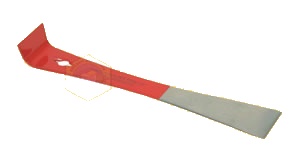
After prying off the outer lid Joan showed me the inner cover. The center hole is an entry into the hive below. On the left is the notch that’s an exit to the outside world. Only the older workers go outdoors.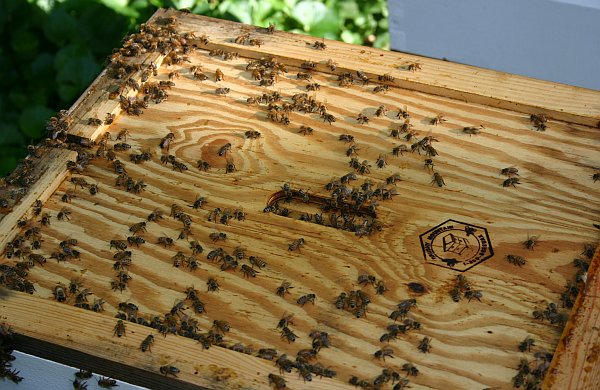
This lid is the only horizontal interior section. Everything else inside the hive is vertical.
Each section has no bottom and holds 8 to 10 frames that slide in from the top. The frames have panels with very slight hexagonal surfaces to give bees the hint to “Build here.” The frames are vertical and close to each other for maximum surface area. The bees build their hive on a vertical surface in the dark just as they would in a bee tree.
Here’s the top of the first section with the lid off. Joan has just “smoked” them so the bees are retreating to the inside.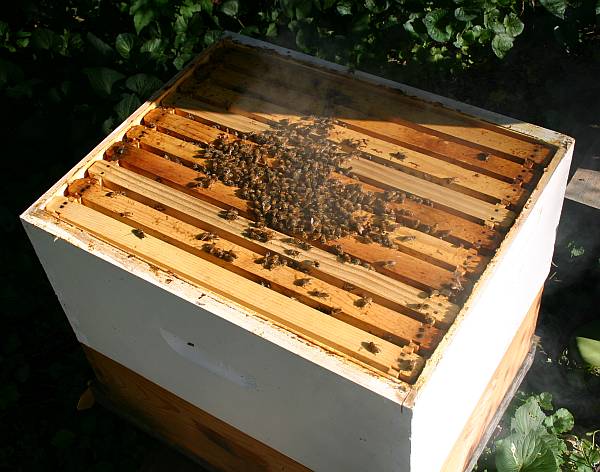
Joan pried the frame edge and lifted one out. Here’s the same area with one frame missing. The frames are very close together but that doesn’t matter. Bees are tiny.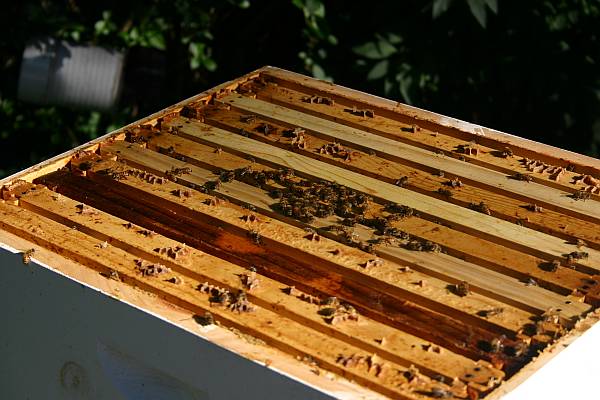
Each hive contains one queen, thousands of female workers and a few male drones. When the frame comes out it is covered with bees. Almost all are female workers. I saw a few drones but ran out of time to delve deep into the hive and find the queen.
Tomorrow I’ll show you what the bees were doing inside.
(photo of Kate St. John waving, by Joan Guerin. All other photos by Kate St. John)
This is so cool … I hope you’re going to cover the colony collapse disorder. We need our bees!!!
What does it take to set up a hive?
I have lots of honey bees around here and not sure if it’s a natural hive or if someone has hives nearby…Nice to see how things work in the hive…love raw honey and chewing on the honeycomb…Is this the Joan who was here?
Yes, this is Joan who visited when we did the monarch movie.
I don’t know what it takes to set up a hive but I am certain new beekeepers need some training or a mentor so they know what they’re looking at. I’ll find out more from Joan.
So interesting!!! Thanks Kate. I can’t wait for the rest of the series. I don’t think that there is much you won’t try when it comes to nature. Well…..maybe not alligator wrestling.
Thanks for saying “her body” and pointing out that the workers are female.
I did some beekeeping years ago when the main problem were skunk raids in the winter. They would gobble up the bees if they gained entry.
My busiest time seemed to occur in May/ June when I got constant calls, from frantic homeowners, to remove migrating swarms from trees,houses,etc. If you captured the queen,you got the swarm, and a new colony to maintain. Probably have done a hundred or more of these captures.